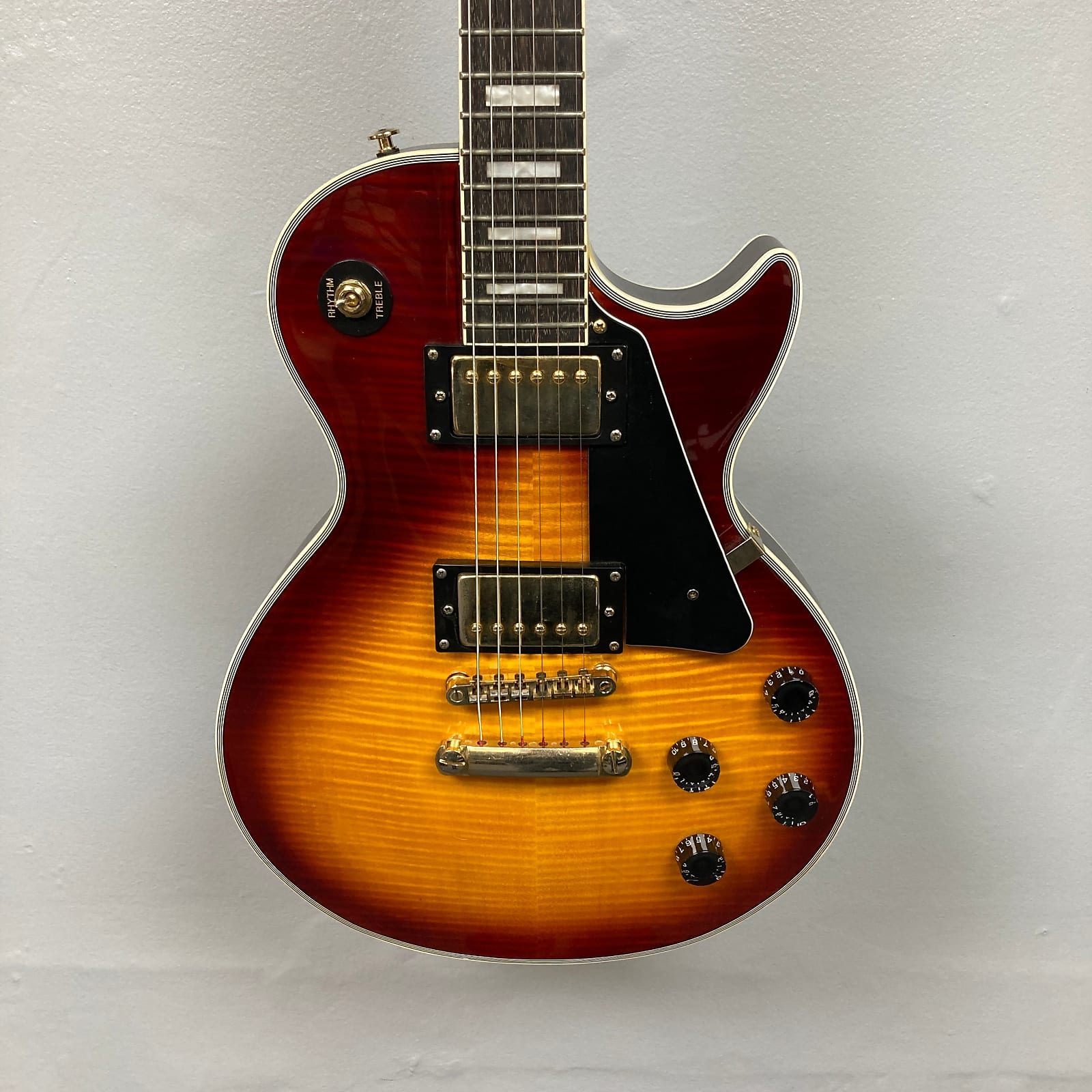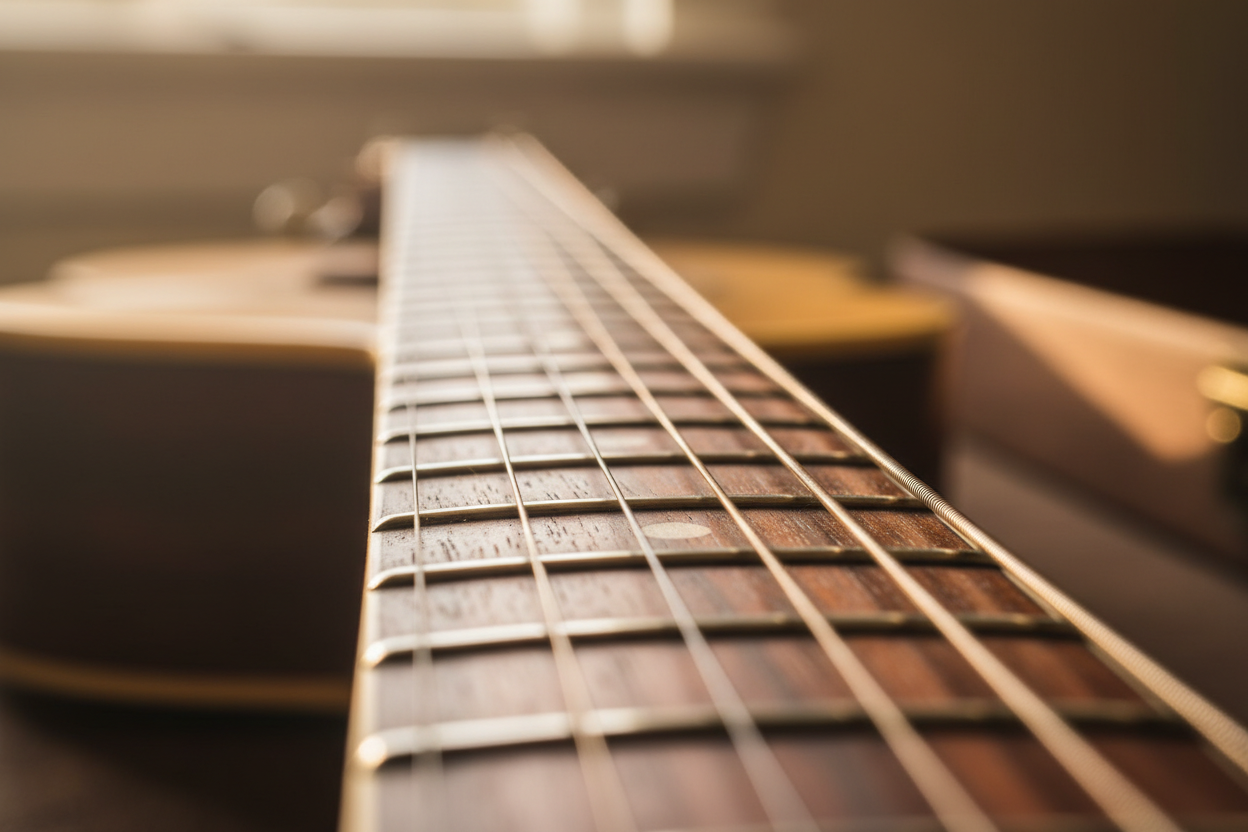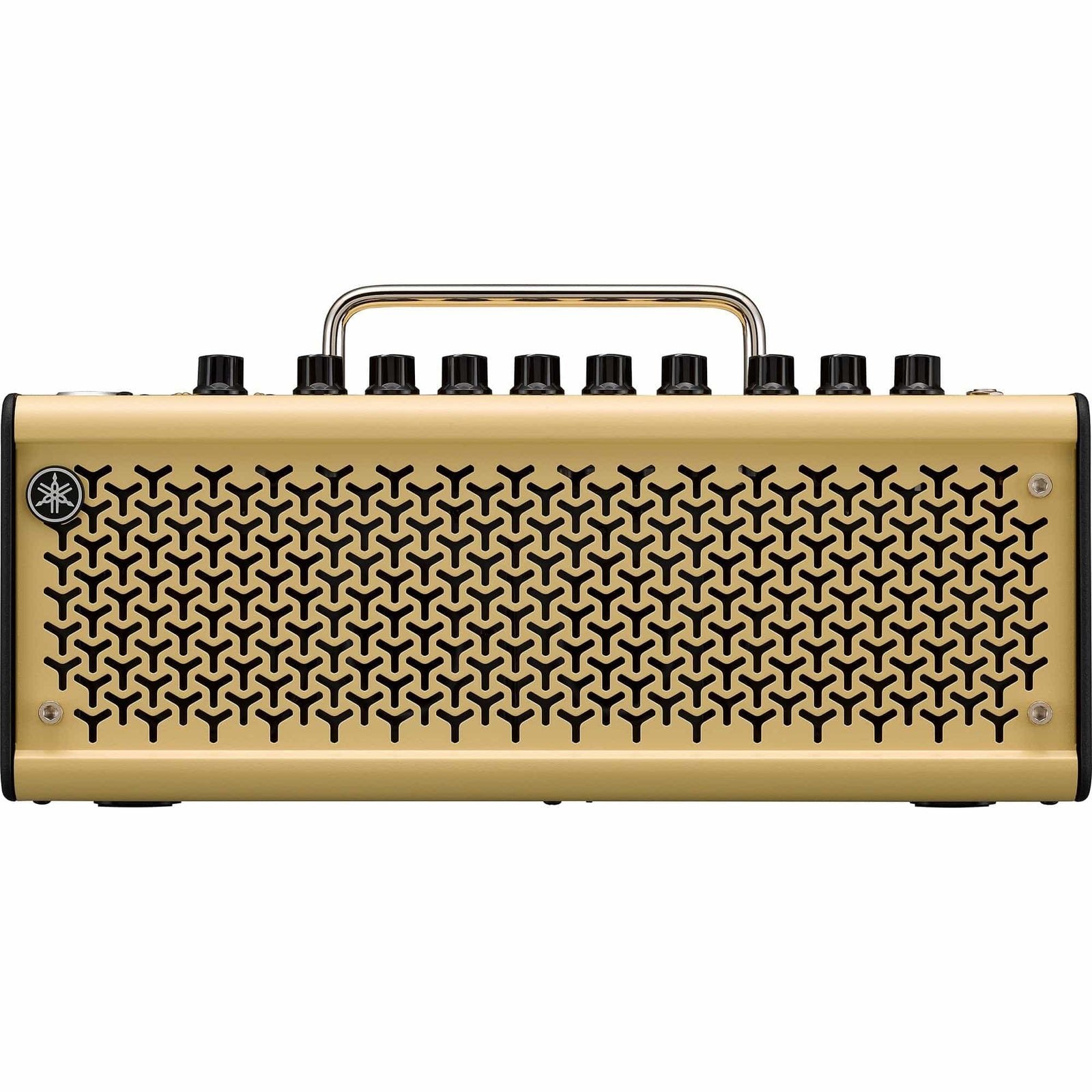Discover Your Musical Journey: An Invitation to Connect and Create
Hello Music Enthusiast,
In today's digital age, it often feels like the world is slipping into a state of isolation. We find ourselves yearning for genuine connections and authentic experiences that bring people together. At our heart lies an unwavering commitment to change this narrative through music—an art form that transcends barriers and speaks directly to the soul.
Are you ready to rediscover the joy of human interaction? Let's talk shop!
Whether you're strumming your first chord or perfecting complex solos, we offer a supportive environment where creativity knows no bounds. Step into our welcoming space located in Mount Joy, PA, or explore endless possibilities from anywhere you are with our online store designed just for you. Below are three regular monthly features that you can enjoy.
-
Off the Shelf: From classic instruments to modern marvels, our collection includes something special for every taste, updated here monthly with featured products you'll want to know about so you can update your musical arsenal.
-
On the Staff: Meet the Guitars on Main staff and instructors with a featured biography, playing tips, required listening, or mini lesson each month.
-
On the Bench: Have a guitar needing TLC? Our skilled experts are here offering repair services and advice for your cherished musical instruments. Each month features a new topic from the bench.
Off the Shelf: NUX Atlantic Delay/Reverb Review
Smoothing out a boosted, overdriven, or distorted sound is an important aspect of making that sound work in a mix, especially when jamming solo with backing tracks, playing live with others in a band, or in a recording studio.
Traditionally, amp spring reverb goes a long way to smoothing out these dry, raw sounds, but many amps don't have spring reverb tanks anymore, or many players are simply choosing to go "ampless," highlighting the need for a quality, high-fidelity reverb pedal. In today's market, you can expect to drop between $100-$400 for a reverb pedal that covers the basic types of reverbs: spring, room, hall, and plate. A good reverb is important, as it "finishes off" a driven tone, offering a bit of extra sparkle, clarity, sustain, even-ness, and definition to the notes, without adding compression.
Delay goes an additional few steps in professionalizing your driven tone, but units are usually specialized, and therefore, expensive; you'd need a tape echo, an analog delay, and a digital delay pedal to have all the different types of delay at your fingertips (or, rather toes). A quality digital delay pedal alone will set you back another $100-$400. Even then, you'll still need a tape echo and an analog delay pedal, so that will cost even more!
Enter the NUX Atlantic Delay & Reverb, one of the best pedals this pedal-phile has ever played. Really, it's that great.

First, you have spring, plate, and hall reverbs onboard, selectable on the fly with a toggle switch. All sound excellent, but the clear winner is the amp-like spring reverb. With the level and decay adjustable via knobs, you can go from slightly ambient to full surf drip and beyond. All three reverb sounds complement any guitar signal coming into the unit, from clean to EVH-style distortion. Eddie Van Halen popularized the use of several pedals, like the MXR Phase 90 and MXR Flanger, but at the heart of his always-overdriven sound was a great reverb and delay, which rarely gets the credit it deserves in his tone.
Next, all three types of delay are selectable as well. The toggle switch marked 70's (analog delay), 60's (tape echo), and 80's (digital delay) makes it easy to sample each of these delays on the fly. The effect level, time, and number of repeats are adjustable via a trio of knobs, like any other delay pedal. The digital delay (80's), combined with the spring reverb, smooths out any driven tone, shaping it up and polishing off the rough edges with a bit of tasty brightness. Plus, when you switch off boost, overdrive, or distortion, the clean sound with these two effects is breathtaking. This writer prefers 3 repeats at 360ms, with the level at noon, or to taste, a trick garnered by watching Eric Johnson set his effects while he did a soundcheck back in the 80's.
Reverb and delay should not get out in front of your guitar sound nor sit behind it, but rather reside in it, becoming part of the organic whole. This pedal does this perfectly, where many others costing several times as much color or weaken the sound, instead of widening and clarifying it. You can run either effect independently or together, as each has its own on/off button. Tap the delay button with your foot for on-the-fly tap tempo.
Beyond that, if you hold the Reverb button, it adds a "shimmer" effect. NUX really has thought of everything, even including a USB port for future upgrades.
Every guitar player could use this pedal, placing it at the end of the pedal chain, after your tone, drive, and modulation pedals into an amp. In an amp’s effects loop, it sounds perfect. It sounds equally good before or after an IR-type pedal in an ampless setup, perfect for a fly rig, as it only takes up one spot on your board and requires only one power plug.
The best part is that it's $159. Is a single, upgradeable pedal with all three types of delays and reverbs, and the ability to send mono and stereo signals out worth it? Absolutely.
On the Staff: Introducing Guitar Instructor Kyle Hancock

If you are looking to up your guitar game in a meaningful way, sign up with our own guitarist and teacher par excellence, Kyle Hancock.
Kyle's love for the disciplines of music theory, sight reading, and jazz, with a firm grounding in blues and rock, is evident from the first moment you hear him play. Between his busy lesson spots at the shop, Kyle can often be heard working out complex transcriptions on the guitar—the teacher is the perpetual student, himself.
Kyle's love for stringed instruments began in grade school, where he first played the violin. Fortunately for us, he moved in sixth grade, was gifted his first classical guitar from his father, stopped playing violin altogether, and began playing guitar at 11. He's 28 now, and he has been teaching for the last 8 years, his interest sparked first by teaching friends informally, then quickly transitioning to teaching professionally.
Kyle has always been endeavoring in music. Early on, he took lessons from Ed Rowlins, a retired local teacher. In school, he played in Jazz Ensemble and pit orchestra for shows like Seussical the Musical, but he quickly discovered the infectious joy of playing in rock bands during his junior year of high school.
At Millersville University, his relentless pursuit of music continued. Here, he was in Jazz Band and Jazz Lab Band, taking lessons with Marcia Englar and David Cullen. He graduated in 2018 and has been studying with one of his favorite musicians, local jazz legend, Mark Ryan, since 2019.
Speaking of musicians Kyle admires, Dickey Betts (and all Allman Brothers iterations from the past to the present), Jimi Hendrix, Jerry Garcia, Steve Kimock, Jack Pearson, Pat Metheny, John Scofield, Kurt Rosenwinkel, Wes Montgomery, Pat Martino, Nels Cline, Charlie Parker, Miles Davis, John Coltrane, and Stevie Ray Vaughn are some noteworthy musicians who inspired his guitar playing and musicianship over the years.
Kyle teaches students of all levels, focusing on reading music and understanding and applying the systems of music, such as rhythm, fluently, using a wide variety of established selections of music. He often transcribes and arranges the selections himself, which are valuable skills, sadly disappearing from the musician's acumen these days.
Anyone who desires to work actively in music will learn from Kyle. His own philosophy is to keep moving and learning, which he also expects from his students. Once, in high school, he was playing the "National Anthem" on the guitar, a milestone in guitar playing, when he panicked, being in front of so many people, rebooted, and started over—in front of his high school peers at Senior Night. In short, he kept moving, not making a tragedy out of it for himself or for those attending.
Check out his solo jazz performance of Sonny & Cher's "I Got You Babe" here: Mount Joy Minnie at Guitars on Main.
He's an excellent player with a mature touch on the instrument and deep sense of rhythm. He currently performs live with several different local bands: D. C. and Company, the Mason Hess Band, and the Kyle Hancock Group, so check him out!
On the Bench: How to Spot a Fake Gibson Les Paul

Gibson is absolutely meticulous about quality and aesthetics; after all, they're the ones who created some of the most iconic instruments in guitar history. The design of the headstock comes first when trying to determine a fake. The "moustache" shape is a noticeable feature. Without this, it’s simply not a Gibson Les Paul.
Take a close look at the Gibson logo on the headstock, which should be perfectly centered and flawlessly symmetrical. If anything looks off, it probably is. Gibson has long been consistent with the font it uses as well, so anything that deviates from the standard is most likely counterfeit.
Another tell-tale sign that you have a fake is the truss rod cover on the headstock. Gibson has only ever made covers with two screws, one at each end; therefore, any guitar with three screws is an obvious fake. Even if the guitar you're considering has a two-screw truss rod cover, there are a host of other signs to consider. The truss rod itself is adjustable only with a 5/16 socket wrench—never an Allen key. While you're still inspecting the headstock, check the nut; it should never be plastic.
Real Gibsons have such an attention to detail with the body and neck binding that any imperfection points toward a counterfeit guitar. Check especially where the body binding meets the neck binding. There should be no separation of the body and neck binding at the neck joint. A thin separation or gap between bindings is a dead giveaway that you're looking at a counterfeit.
Also, check the binding throughout the guitar, as there should be zero paint on any binding. The binding is a highly specialized process, often one of the last custom shop steps, and it takes highly skilled professionals to create and install Gibson's binding to their standard of excellence.
Look at the ends of the frets where they meet the side of the neck; Gibson extended binding up the frets on their bound-fingerboard models for a professional touch (until 2015). These bound fret ends are called fret "nibs,” and the absence of bound fret nibs is a sure-fire way to spot a fake, or, at least, a non-vintage Gibson.
The serial number on a Gibson tells a more complicated story than a simple glance could elicit. The good news is that Gibson does have a link to a Serial Number Search, which can provide another piece to the puzzle.

Take a look at the bridge screws. First off, they should be thin, not wide. The other obvious difference is the screw head type. Gibson has never used a flathead screw from the top to adjust bridge height, making this one of the easiest ways to spot a fake.
An actual Gibson Les Paul is heavy. This is a big reason why Jimmy Page had a slouch. Typically, real Les Pauls are about 8 lbs. or heavier (on the lighter side) and up to 14 lbs. (on the heavier side). If the Les Paul in question comes in under this weight, it’s either unbelievably rare, or an outright fake.
Removing the pickups is another way to check for authenticity. Gibson never uses veneer to pass for an actual top cap. Take a close look at the top of the pickup cavity for a real cap, not merely a thin veneer.
In our PUP photo of the fake vintage Gibson Les Paul Custom, the back of the pickup is a giveaway—there’s absolutely no branding, no “Made in USA” stamp, and no braided shielding. Instead, it’s wired with a cheap yellow lead, and the baseplate is completely blank. Nothing about it matches what you'd expect from a genuine Gibson pickup.
Finally, if the price seems unrealistically low, there is most certainly a reason for it. The number one reason the price is so low is that it’s a fake. Fakes cut corners wherever possible: for example, with the electronics, such as the switches and pots; you'll never find CTS or Switchcraft parts in a counterfeit model.
Conclusion
More than just transactions, we believe true artistry flourishes when nurtured within communities built upon respectful exchanges between passionate individuals who share common dreams, like yours!
We invite each one reading these words today—to come join us as valued members not only because it’s about playing amazing tunes but also making lasting friendships along life’s beautiful melody-filled path ahead.
Stay tuned by subscribing below for exciting updates straight away: [Subscribe Here]
Let’s turn disconnection into harmonious collaboration, shall we?
Keep rocking, The Team at Guitars on Main.




